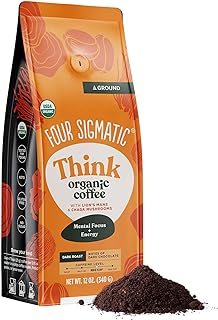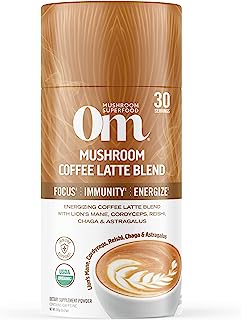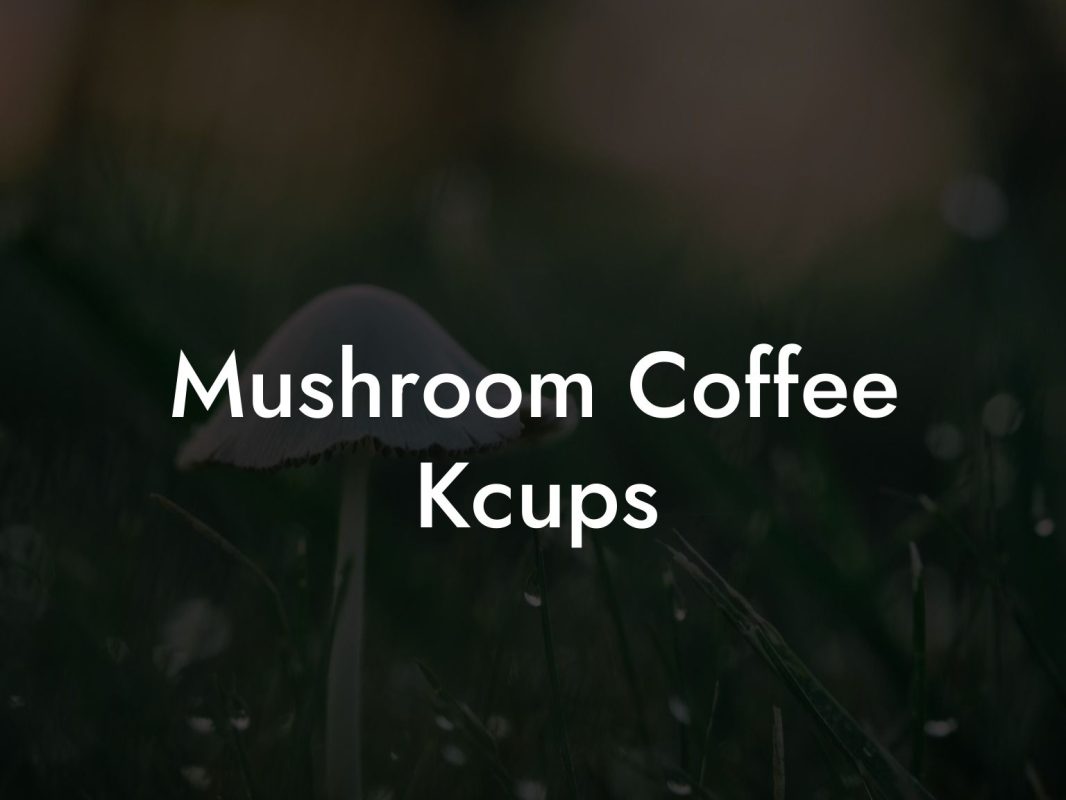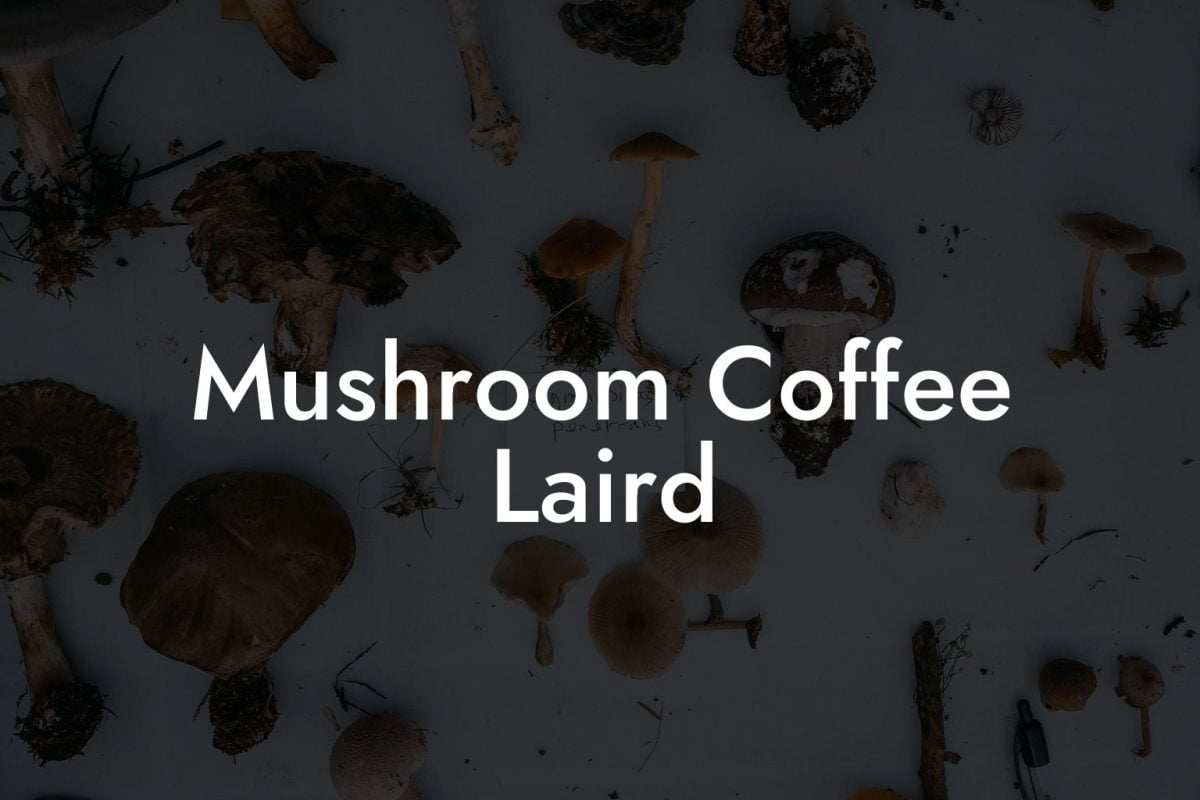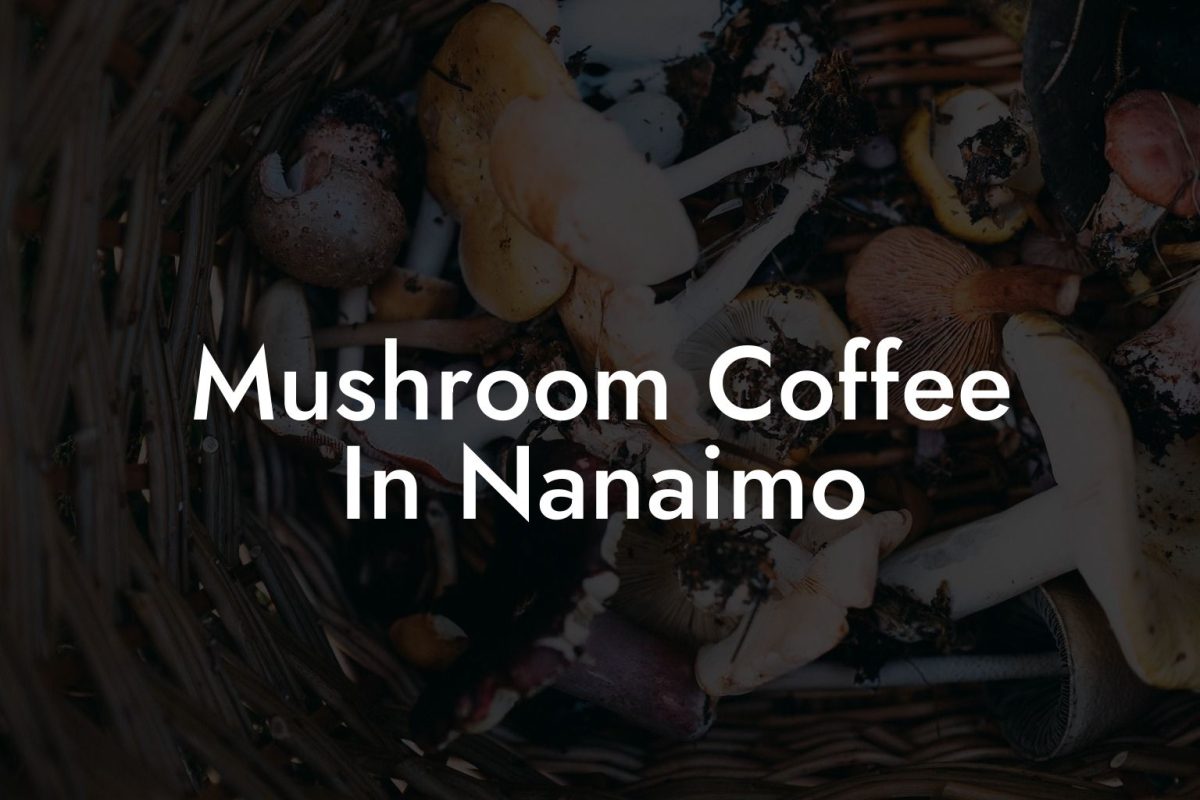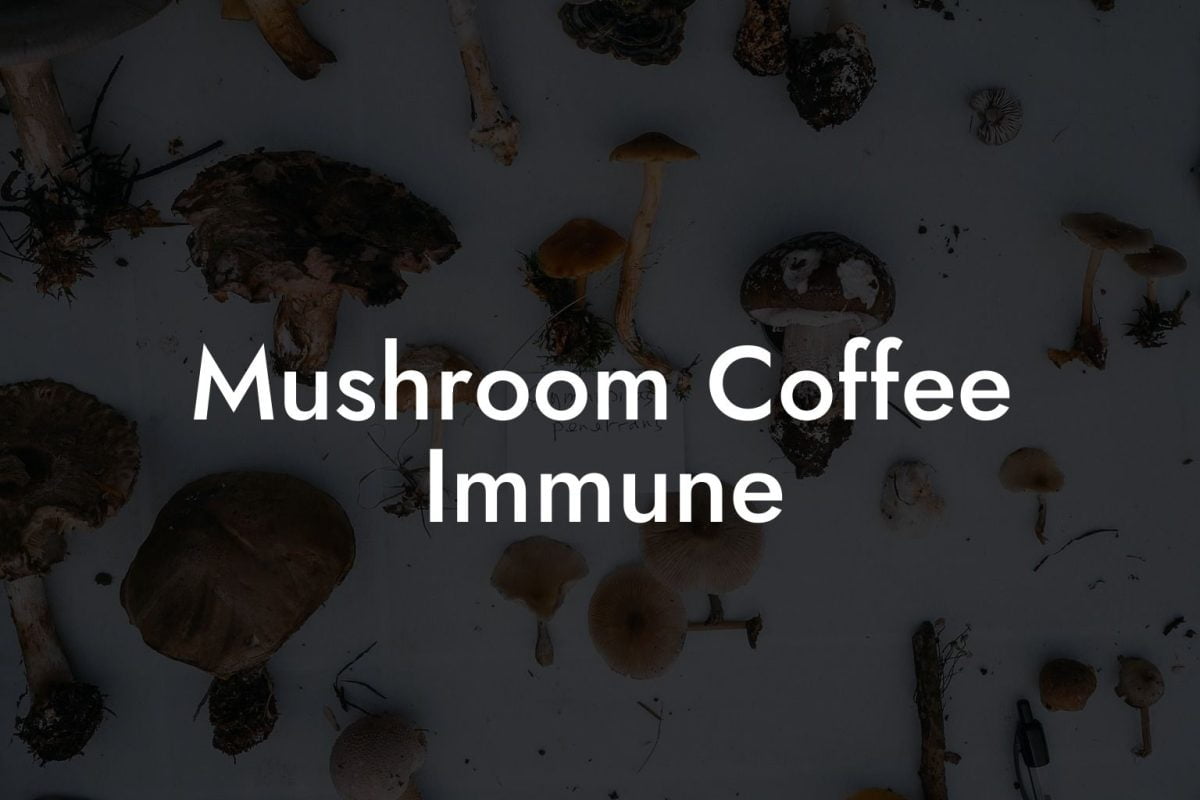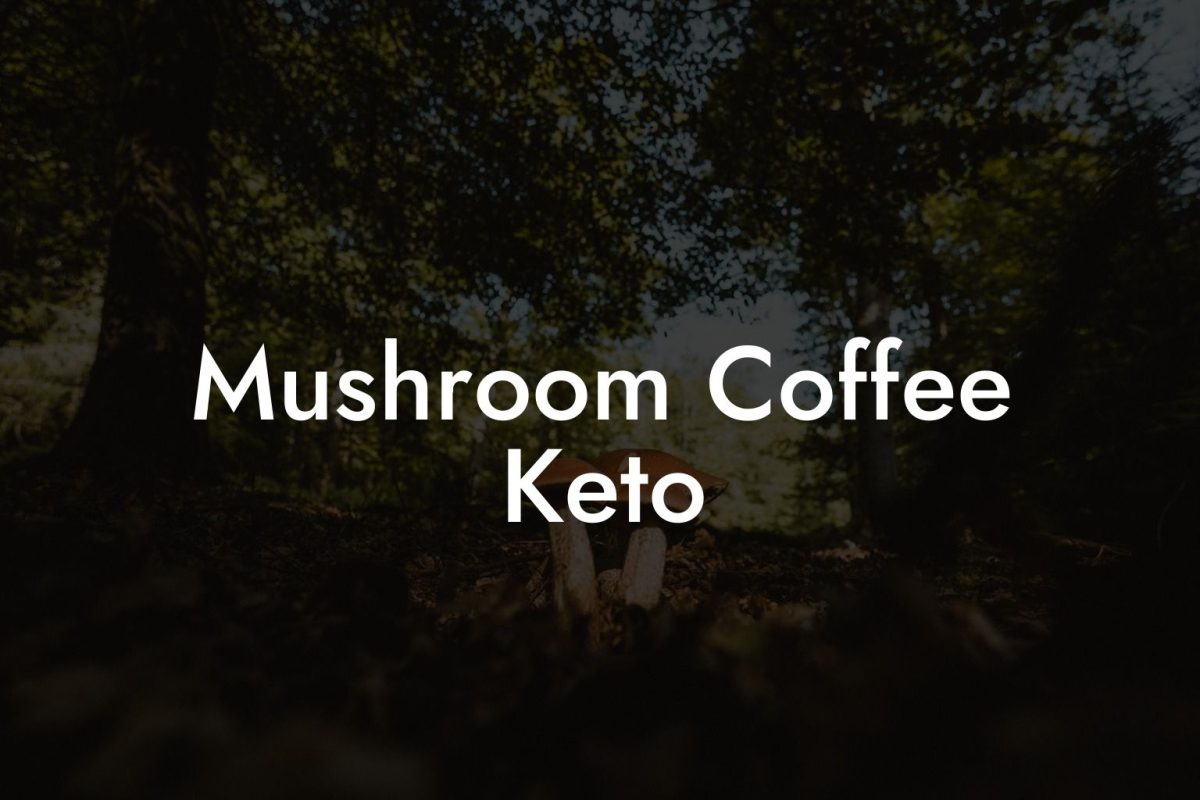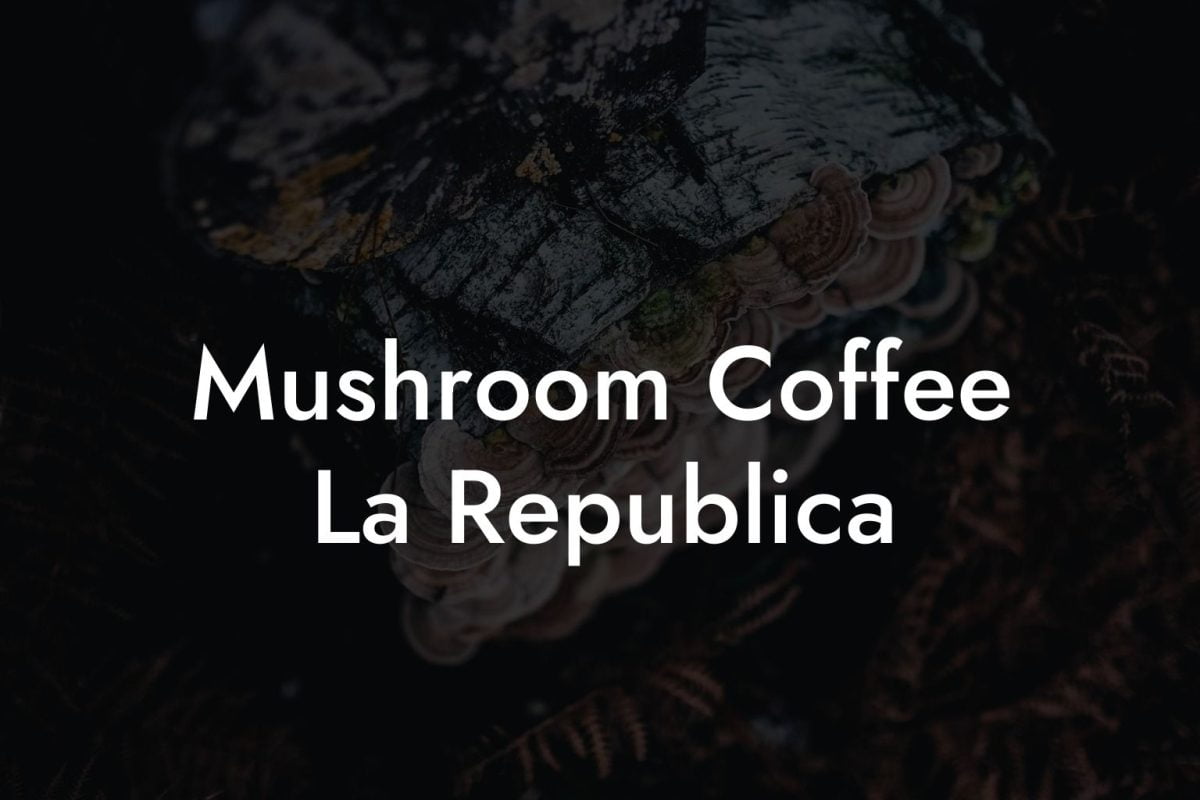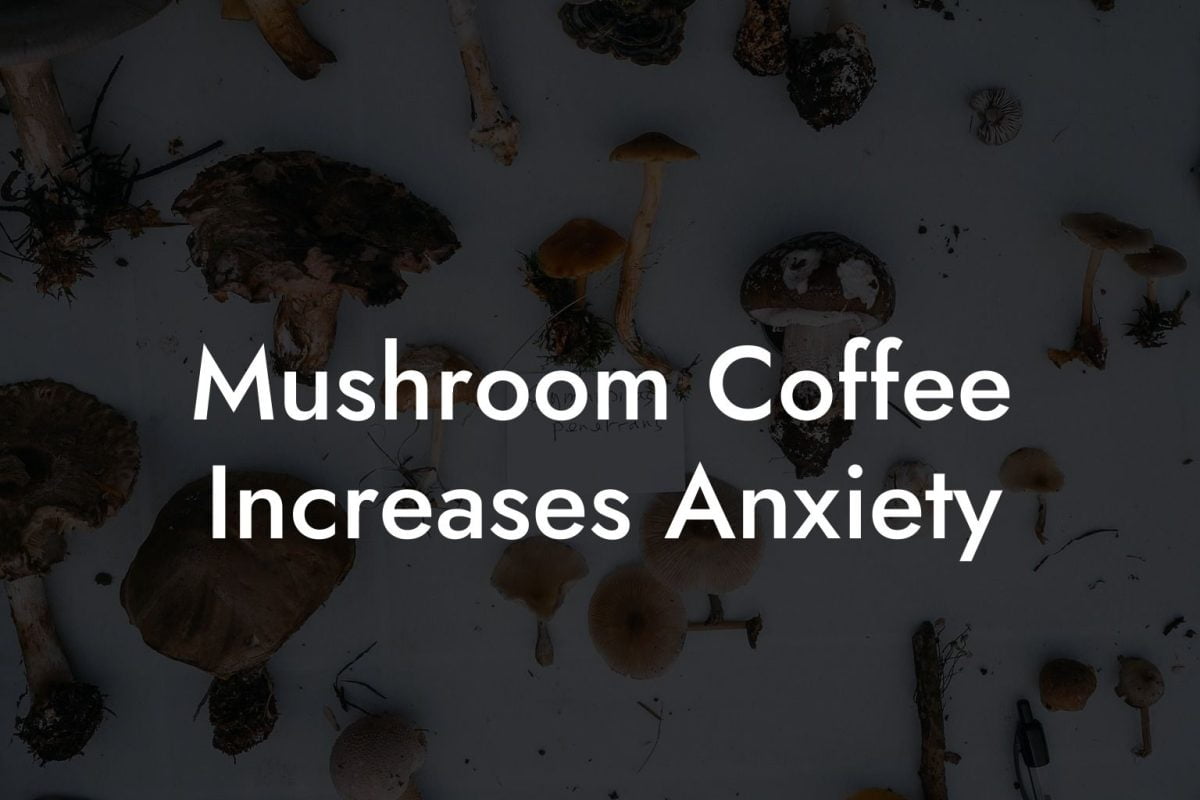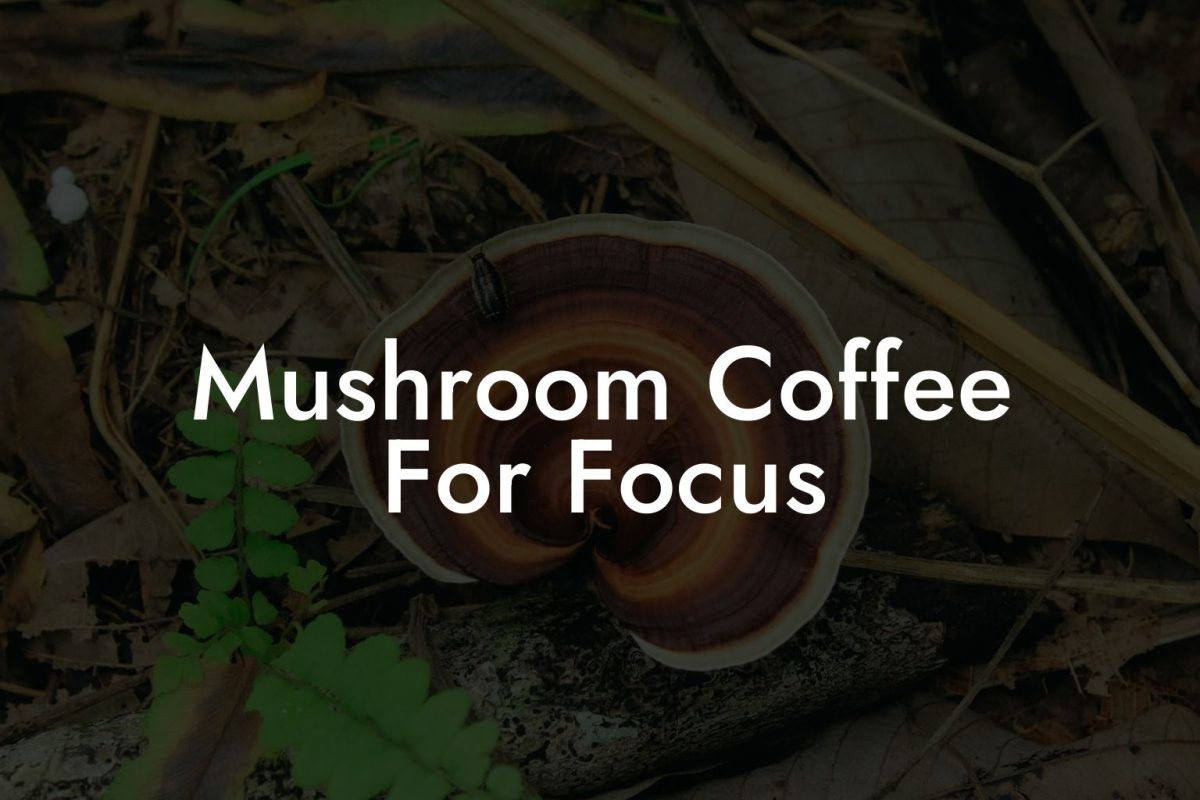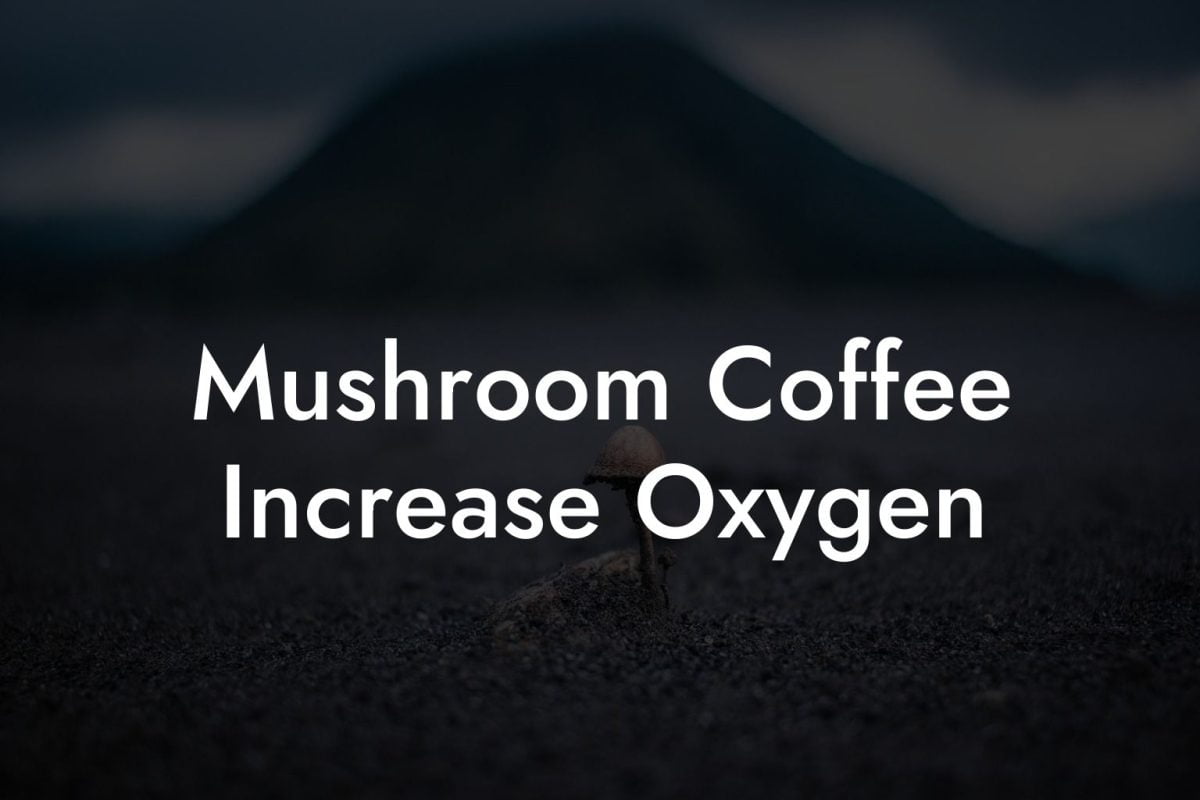Picture this: your morning brew gets a rad upgrade from your average cup of joe, thanks to a groundbreaking fusion of nature and innovation. Welcome to the world of Mushroom Coffee Substrate, where earthy mycelium meets the bold spirit of your favorite coffee, an all-natural, sustainable twist that’s catching fire with Gen-Z and millennials looking for something offbeat and transformative. Whether you’re a biohacker, a wellness enthusiast, or simply curious about blending two of nature’s most potent ingredients, this guide is here to spill the tea (or should we say, brew the coffee) on everything you need to know.
Quick Links to Useful Sections
- What Is Mushroom Coffee Substrate?
- The Science Behind Mushroom Coffee: Substrate & Mycelium Magic
- How Does Mushroom Coffee Substrate Work? The Process Unpacked
- 1. Selecting the Ingredients
- 2. Sterilization: The Clean Slate
- 3. Inoculation with Mushroom Spawn
- 4. Incubation and Colonization
- 5. Harvesting and Integration
- Why Embrace Mushroom Coffee Substrate? Benefits That Boost Both Mind and Body
- The Best Mushrooms and Substrates for Your Coffee Innovation
- Mushroom Varieties That Rock
- Substrate Components That Pack a Punch
- Crafting Your Own Mushroom Coffee Substrate: A DIY Guide
- Step 1: Gather Your Ingredients and Tools
- Step 2: Prepare and Sterilize the Substrate
- Step 3: Inoculate and Incubate
- Step 4: Harvest and Enjoy
- Revamping Your Daily Coffee Routine: Trending Ways to Enjoy Mushroom Coffee
- Café-Style Infusions at Home
- Cold Brew Creations
- Blend Into Smoothies or Protein Shakes
- Sustainable Coffee Rituals
- The Intersection of Sustainability and Innovation in Mushroom Coffee
- Overcoming Challenges and Troubleshooting Tips for the Perfect Brew
- Issue 1: Contamination Woes
- Issue 2: Slow Mycelium Growth
- Issue 3: Flavor Imbalance
- Resources and Community Support: Your Next Steps
- Mushroom Coffee Substrate and Modern Lifestyle: A Match Made in Innovation Heaven
- Mushroom Coffee Substrate FAQs: Your Top Questions Answered
- Your Next Step on the Journey to a Healthier, More Innovative Brew
What Is Mushroom Coffee Substrate?
At its core, Mushroom Coffee Substrate is the secret ingredient behind a new wave of coffee that doesn’t just wake you up, it nourishes your body and mind. This innovative concept involves using a specially formulated “substrate” that’s been inoculated with mushroom spawn. Think of the substrate as the nutrient-rich bed where mushrooms grow, and coffee, with its natural adaptogens, meets the bioactive properties of fungi.
In simpler terms, the substrate is the foundation or medium, typically composed of organic materials like sawdust, bran, and even coffee grounds, that provides a home for beneficial mushroom species. When integrated with coffee, these mushrooms transform into a powerhouse blend known not only for its robust flavor but also for potential health benefits. It’s like having a double-shot of energy and wellness in every cup.
Whether you’re into the ritual of coffee or passionate about sustainable living, Mushroom Coffee Substrate represents a fusion of ancient natural wisdom and modern innovation. It’s an eco-friendly option that aligns with a lifestyle dedicated to health, sustainability, and a touch of counterculture rebellion.
The Science Behind Mushroom Coffee: Substrate & Mycelium Magic
Let’s take a brief detour into the world of fungi. At the heart of mushroom cultivation is the incredible mycelium: the underground network of thread-like structures that enable mushrooms to absorb nutrients from their environment. Mycelium is the powerhouse that transforms the humble substrate into a thriving ecosystem of bioactive compounds.
Looking For The Best Mushroom Coffee? You'll Love These:
When we talk about Mushroom Coffee Substrate, we’re referring to a substrate that’s not just a passive medium but an active player. Loaded with organic matter (often coffee waste, sawdust, or agricultural by-products), it’s bred to support the growth of specific mushrooms known for their adaptogenic and antioxidant properties, such as Lion’s Mane, Chaga, or Reishi. The result? A coffee infusion that’s more than a morning pick-me-up, it’s a holistic elixir.
These fungi have been utilized in traditional medicine for centuries, and now, thanks to cutting-edge cultivation techniques, their benefits are being harnessed in a way that complements your daily caffeine ritual. Mushroom coffee offers an intriguing balance: it gives you that explosive energy and alertness from the coffee while potentially buffering the harsh effects of caffeine with the calming influence of adaptogens.
The process is all about equilibrium. The substrate must be carefully engineered to provide the right moisture, pH, and nutrients to support mycelium growth, ensuring that the mushrooms produce the bioactive compounds that are so coveted in today’s wellness circles. In essence, every element of the substrate is purpose-built, meticulously combining science and sustainability.
How Does Mushroom Coffee Substrate Work? The Process Unpacked
Ready for a behind-the-scenes look at how this rad coffee concoction comes together? Here’s the lowdown:
1. Selecting the Ingredients
Just like your favorite artisanal coffee, the foundation of Mushroom Coffee Substrate begins with top-notch ingredients. Organic coffee grounds, rich in aroma and flavor, serve as one of the key components. They’re combined with agricultural by-products like hardwood sawdust, rice bran, or even spent brewer’s grain, creating an ultra-nutritious substrate perfect for mushroom growth.
2. Sterilization: The Clean Slate
Before any mushroom magic can happen, the substrate must be sterilized. This process eliminates unwanted bacteria, molds, or competing fungi, ensuring that only the beneficial mycelium can take over. Think of it as giving your substrate a spa day before it’s ready to work its form.
3. Inoculation with Mushroom Spawn
After sterilization, the substrate is inoculated with mushroom spawn, the equivalent of “planting the seed” of wellness. This step is pivotal, as it dictates which mushrooms will grow and, in turn, the kinds of health benefits and flavors your coffee will ultimately harness.
4. Incubation and Colonization
The inoculated substrate then enters an incubation phase. In a controlled environment, where temperature and humidity are finely tuned, the mycelium begins to colonize the substrate. This process can take anywhere from a couple of weeks to a month. As the mycelium spreads, it transforms the substrate into a lively matrix brimming with potential.
During this period, the substrate is essentially fermenting with nature’s very own science experiment. It’s like watching a time-lapse video of colors swirling together into a masterpiece, except this masterpiece is aimed at enhancing your coffee ritual.
5. Harvesting and Integration
Once the mycelium has fully colonized the substrate, it’s either harvested as a whole or allowed to fruit for mushrooms, whose extracts can then be blended with finely ground coffee. The final product is a potent mix that marries the bold energy of coffee with the soothing, adaptogenic properties of mushrooms.
The upshot? An innovative beverage that appeals to the modern health-conscious consumer, promising everything from improved focus and immune health to enhanced mood stability.
Why Embrace Mushroom Coffee Substrate? Benefits That Boost Both Mind and Body
Let’s break down why Mushroom Coffee Substrate is turning heads (and taste buds) around the globe:
- Enhanced Energy Without the Jitters: Combining coffee’s natural caffeine lift with the adaptogenic properties of mushrooms can help modulate the crash and jitters often associated with traditional coffee.
- Immune System Support: Mushrooms like Chaga and Reishi are renowned for their immune-boosting compounds, offering an added layer of defense against everyday stressors.
- Mindful Productivity: The calming, neuroprotective effects of mushrooms such as Lion’s Mane can enhance cognitive clarity and focus, making your morning cup a smart choice for the brain.
- Sustainable and Eco-Friendly: By using agricultural by-products and repurposing coffee grounds, this method champions sustainability, reducing waste while repurposing resources.
- Digestive Health Benefits: The fiber and bioactive compounds formed during the mycelium’s colonization may support gut health, a key factor for overall wellness.
- Holistic Wellness: Beyond just waking you up, this blend is part of a broader movement towards integrated wellness, merging the physical, mental, and even spiritual dimensions of self-care.
For the modern coffee lover, Mushroom Coffee Substrate isn't just about a caffeine buzz, it’s a lifestyle upgrade that speaks to a deeper commitment to health, sustainability, and innovation.
The Best Mushrooms and Substrates for Your Coffee Innovation
Not all mushrooms (or substrates) are created equal. When it comes to crafting the perfect Mushroom Coffee Substrate, selecting the right fungal species and substrate blend is key. Here’s a quick run-down:
Mushroom Varieties That Rock
- Lion’s Mane: Known for its cognitive-boosting properties, Lion’s Mane is a favorite for those seeking enhanced mental clarity and focus.
- Chaga: This superfood mushroom is celebrated for its high antioxidant content and immune-boosting benefits, perfect for a daily health fortification.
- Reishi: Often dubbed the “mushroom of immortality,” Reishi is prized for its stress-reducing and energy-balancing qualities.
- Cordyceps: Excellent for athletic performance and stamina, Cordyceps offers a natural boost to energy and endurance.
Each mushroom brings its unique profile to the table, and the choice often comes down to your specific wellness goals. Whether you’re after a mental performance enhancer or a guardian for your immune system, there’s a mushroom blend that’s just right for you.
Substrate Components That Pack a Punch
The substrate provides the canvas upon which your mushroom masterpiece is painted. Here are some common components:
- Coffee Grounds: Recycling spent coffee grounds adds both flavor and an eco-friendly twist, providing essential nutrients for mushroom growth.
- Sawdust: Often derived from hardwood sources, sawdust offers a fibrous texture that supports strong mycelium colonization.
- Rice Bran & Other Grains: These components are rich in proteins and carbohydrates, fueling the growth of the beneficial mycelium.
- Other Agricultural By-products: Materials like wheat straw or spent brewer’s grain can also be used to enrich the substrate, adding diversity to its nutrient profile.
The clever combination of these ingredients not only supports robust mushroom growth but also contributes to the unique flavor and bioactive profile of the final coffee blend.
Crafting Your Own Mushroom Coffee Substrate: A DIY Guide
For those of you who love to roll up your sleeves and dive headfirst into DIY projects, creating your own Mushroom Coffee Substrate can be a rewarding and fun experiment. Plus, it’s a fantastic conversation starter at your next brunch or co-working session.
Step 1: Gather Your Ingredients and Tools
You’ll need:
- Organic coffee grounds (preferably from a local roaster or your own brew, trust your taste buds)
- Hardwood sawdust or similar organic substrates
- Rice bran or another nutrient-dense grain
- Mushroom spawn (choose your favorite strain, Lion’s Mane, Chaga, or Reishi are popular choices)
- Sterilization equipment (a pressure cooker, for instance)
- An incubation container with controlled humidity and temperature settings
The right tools can transform your kitchen into a mini fungal lab, so channel your inner mycologist and get ready to innovate.
Step 2: Prepare and Sterilize the Substrate
Mix your coffee grounds, sawdust, and rice bran in the right proportions to create a nutrient-dense blend. Think of this as creating your own signature recipe, adjust ratios until you find the perfect balance of texture and aroma. Then, sterilize the mixture using a pressure cooker to eliminate unwanted microbes. This step is crucial for ensuring that the mushroom spawn has a clean slate to colonize.
Step 3: Inoculate and Incubate
Once your substrate has cooled, mix in the mushroom spawn thoroughly. Fill your incubation container with the inoculated substrate, and seal it up in a warm, dark space with controlled humidity. Over the next few weeks, watch as the mycelium begins to weave its magic. Patience is key in this stage, think of it as your coffee’s own version of slow-cooked, artisanal perfection.
Step 4: Harvest and Enjoy
After full colonization (or once the mushrooms have fruited, if you’re opting for fresh mushrooms), it’s time to harvest. Dry and grind your product if needed, then blend it with your coffee. The result is an earthy, multifaceted brew that combines the stimulating effects of caffeine with the calming benefits of mushroom extract.
Not only will you be fueling your mornings with a unique, sustainable beverage, but you’ll also join a growing community that values creativity, wellness, and a dash of science.
Revamping Your Daily Coffee Routine: Trending Ways to Enjoy Mushroom Coffee
For the modern connoisseur, a cup of Mushroom Coffee is more than just a beverage, it’s a ritual that encapsulates sustainability, wellness, and forward-thinking innovation. Here are a few creative ways to incorporate this trend into your daily routine:
Café-Style Infusions at Home
Channel your inner barista by experimenting with latte art using mushroom coffee. Use a milk frother, sprinkle a bit of cinnamon or cacao, and enjoy a beverage that not only tastes amazing but also supports your holistic health goals.
Cold Brew Creations
For those sweltering summer days, mix up a batch of cold brew infused with mushroom coffee substrate. Its naturally smooth flavor profile makes for a refreshing, health-boosting drink that’ll keep you chill and energized.
Blend Into Smoothies or Protein Shakes
Add a measured scoop of your mushroom coffee blend into your morning smoothie or post-workout protein shake. It’s the perfect integration of biohacking and nutrition for those active lifestyles who crave both flavor and function.
Sustainable Coffee Rituals
Consider using your DIY blend as a conversation starter at community meet-ups, local farmers’ markets, or eco-conscious gatherings. Share your process and the benefits of a more circular, sustainable approach to life. It’s a great way to spark deeper connections with like-minded individuals.
The Intersection of Sustainability and Innovation in Mushroom Coffee
Mushroom Coffee Substrate isn’t just a quirky trend, it embodies the convergence of environmental consciousness and culinary innovation. By reusing coffee grounds and agricultural by-products, we’re not only reducing waste but also turning them into high-value bioactive ingredients.
Today’s sustainable movement is all about minimizing our ecological footprint while maximizing creativity. The science behind mushroom cultivation thrives on this sustainable ethos, as it leverages natural materials that would otherwise become waste. This innovative waste-to-wealth approach allows you to enjoy a nourishing beverage, knowing that you’re contributing to a healthier planet.
Gen-Z and millennials, who lead the charge in environmental activism and creative sustainability, are naturally drawn to this fresh alternative. It's a trend that seamlessly blends cutting-edge mycology, eco-conscious practices, and the time-honored tradition of coffee. Every sip feels like a nod to Mother Nature, a reminder that innovation can be both delicious and responsible.
Overcoming Challenges and Troubleshooting Tips for the Perfect Brew
Like any innovative project, growing and integrating Mushroom Coffee Substrate comes with its bumps and quirks. Here are some common issues and tips to troubleshoot:
Issue 1: Contamination Woes
Sometimes, despite your best sanitization efforts, unwanted molds or bacteria may invade your substrate. The remedy? Ensure that all ingredients are properly sterilized and work in a clean, controlled environment. If contamination occurs, consider starting fresh with a smaller batch to isolate the issue.
Issue 2: Slow Mycelium Growth
Temperature, humidity, and pH are the holy trinity for mycelial expansion. If growth seems sluggish, revisit your incubation conditions. A slight increase in humidity or adjusting the incubation temperature may help kickstart the process.
Issue 3: Flavor Imbalance
The beauty of mushroom coffee lies in its unique flavor profile, a delicate balance between the robustness of coffee and the earthy tones of mushrooms. If your brew ends up tasting off, experiment with adjusting the ratio of coffee grounds to substrate, or consider blending in different mushroom varieties to achieve that harmonious blend.
Don’t forget, experimentation is key! Every batch is a learning experience, and tweaking your process leads to that perfect, signature brew that’s truly yours.
Resources and Community Support: Your Next Steps
Navigating the fascinating world of Mushroom Coffee Substrate is a journey best taken with a community of like-minded innovators. Fortunately, there are plenty of online forums, local mycology clubs, and sustainability groups where you can share tips, troubleshoot issues, and celebrate your successes.
Here are some ways to get connected:
- Online Communities & Social Media: Platforms like Reddit, Discord, and Instagram have thriving groups dedicated to mycology, sustainable coffee, and DIY wellness. Follow hashtags like #MushroomCoffee, #MyceliumMagic, and #SustainableBrews for inspiration and real-life success stories.
- Workshops and Webinars: Look out for online and in-person events hosted by sustainability advocates and mycology experts. These sessions are a fantastic way to learn hands-on tips from the pros.
- Local Growers and Farmers Markets: Engage with local producers who are experimenting with organic coffee blends and mushroom cultivation, you might even score some tips for your own experiments.
- Digital Tools and Blogs: Numerous blogs and digital resources are dedicated to sustainable living, DIY coffee innovations, and advanced mycology techniques that can help refine your process.
Remember, every challenge you face on this journey is an opportunity to learn and connect. The movement towards sustainable, innovative coffee is powered by people like you, who are unafraid to push boundaries and blur the lines between health, technology, and nature.
Mushroom Coffee Substrate and Modern Lifestyle: A Match Made in Innovation Heaven
In today’s fast-paced world, innovation isn’t just about technology, it’s about integrating nature’s wisdom into our everyday lives. Mushroom Coffee Substrate does just that, offering a beverage that not only delivers a kick of energy, but also embodies a holistic approach to health and sustainability. Millennials and Gen-Zers, with their appetite for authenticity, wellness, and environmental responsibility, find this blend irresistible.
This isn’t merely a trend to jump on; it’s a statement about rethinking what we consume and how our choices reflect deeper values. Every cup of mushroom coffee becomes a celebration of creativity, resilience, and an adventurous spirit that dares to reimagine the ordinary.
So next time you brew a cup, pause for a moment and appreciate the layers of innovation that made it possible, a perfect blend of carefully nurtured mycelium, reclaimed coffee grounds, and a dash of eco-friendly passion.
Mushroom Coffee Substrate FAQs: Your Top Questions Answered
Have burning questions about Mushroom Coffee Substrate? We’ve got you covered with answers to some of the most frequently asked questions:
1. What exactly is Mushroom Coffee Substrate?
It’s a unique blend of organic materials, like coffee grounds, sawdust, and other agricultural by-products, designed to support the growth of beneficial mushrooms. These mushrooms produce adaptogenic and antioxidant compounds that, when combined with coffee, yield a beverage that’s both energizing and health-promoting.
2. How does the process work?
The process involves selecting premium ingredients, sterilizing the substrate, inoculating it with mushroom spawn, and then allowing mycelium to colonize the mixture. The result can be harvested directly or extracted to create an innovative coffee blend.
3. Which mushrooms are best for this blend?
Popular choices include Lion’s Mane for cognitive enhancement, Chaga for its rich antioxidant profile, Reishi for stress relief, and Cordyceps for stamina. The selection depends on your personal health goals and taste preferences.
4. What are the main benefits of incorporating mushrooms into my coffee?
Benefits include sustained energy without the jitters, immune system support, improved mental clarity, and the assurance of consuming a sustainable, organic product, all while reducing waste through reusing coffee grounds and other by-products.
5. Can I make this at home?
Absolutely! With the right ingredients and tools, such as organic coffee grounds, sawdust, and mushroom spawn, you can experiment with your own DIY Mushroom Coffee Substrate. Just follow proper sterilization techniques and maintain controlled conditions for optimal mycelium growth.
6. Is mushroom coffee safe for everyone?
For most people, mushroom coffee is safe. However, those with specific allergies or health conditions should consult with a healthcare professional before making any significant changes to their diet.
7. Where can I find quality mushroom spawn and substrate ingredients?
Look for reputable suppliers online, local organic farming co-ops, or specialty shops dedicated to sustainable and organic products. Community recommendations on social media forums can also be incredibly valuable.
8. How sustainable is this approach?
Very! By reusing coffee grounds and incorporating agricultural by-products, this method reduces waste and celebrates a circular economy ethos, aligning with environmentally conscious lifestyles.
9. Does the substrate affect the flavor of the coffee?
Yes, the substrate’s composition can subtly influence the flavor profile. The unique combination of organic ingredients and the specific mushroom strain used will create a distinctive taste that complements the robust character of coffee.
10. Can I tweak the process to suit my taste and health needs?
Certainly! Experiment with different ratios of substrate components, alternative mushroom strains, and brewing techniques to find the perfect blend that resonates with your lifestyle.
Your Next Step on the Journey to a Healthier, More Innovative Brew
Embracing Mushroom Coffee Substrate is more than adopting a new beverage, it's joining a movement that redefines how we connect with nature, innovation, and our own wellness. By merging the best traits of coffee and functional mushrooms, you’re not only giving your mornings a burst of energy but also investing in a sustainable, holistic way of life.
Each cup is a celebration of creativity, a nod to environmental responsibility, and a little act of rebellion against the status quo. Whether you opt for a DIY approach or decide to explore one of the artisanal products popping up on the market, know that you’re part of a community that values authenticity, quality, and the power of nature’s own superfoods.
So go ahead, experiment with your blend, tweak your brewing method, and share your discoveries. The journey is as rewarding as the destination, sip slowly, savor every moment, and let each cup remind you that innovation can be both delicious and transformative.
Welcome to the revolution of Mushroom Coffee, a game-changing blend of earthy wonder and vibrant energy that’s rewriting the rules of the daily grind. Cheers to a healthier, more innovative you!
Looking For The Best Mushroom Coffee? You'll Love These:
Useful Interruption: Dive deeper into the world of Mushroom Coffee with our most popular sections. If there is anything you think is missing or anything you would love for us to write about, just give us a shout.
- Mushroom Coffee Equipment & Product Reviews
- Mushroom Coffee Recipes & Creative Variations
- Mushroom Coffee Guides & Troubleshooting
- Mushroom Coffee Brewing & Preparation Techniques
- Model Rocket Advanced Rocketry & Innovations
- Mushroom Coffee Fundamentals
- Model Rocket Equipment Reviews & Digital Tools
- Mushroom Coffee Health Benefits & Wellness
- Mushroom Coffee Mycology & Scientific Insights
- Mushroom Coffee Community, Lifestyle & Engagement
I tried mushroom coffee this morning and told my friend, "This brew is spore-tacular!" He shot back, "Guess that's why it's such a cap-tivating way to kickstart your day!"


